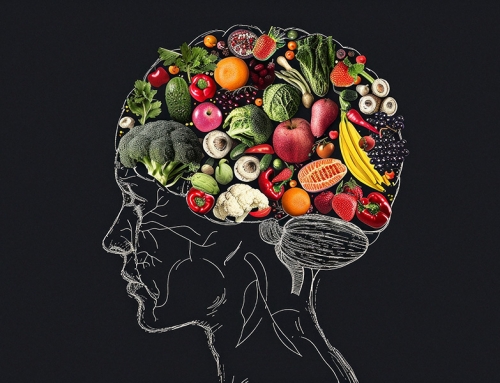Introduction
Healthy living is considered a lifestyle choice that allows an individual to enjoy more elements in a way of life one leads. Though masses understand health as a one-dimensional term, the components of health and what governs its well-being varies from nutrition, economic status, education, childhood experiences and so many more. One can understand their health by stratifying their habits and patterns across all the different dimensions of health. Nutrition as one governing dimension has been long researched and worked on through different strata of a society which varies from organizational mediums, at a micro level, a corporate, cloud kitchens and largely healthcare. All this is done to ensure best health outcomes for individuals. In order to enjoy better health, one should also employ habits that are beneficial to them and the environment, diets that are stable and sustainable, building societal and close relationships with oneself that helps in their cerebral enhancements, learning through their life course and being mindful. This enables maximum efficiency and helps one to attain their full capabilities.
Nutrition-based evidences suggest that for better health outcomes macro and micro nutrients are needed throughout one’s life course. Needs for nutrition are heightened during ante natal period, early years of life, pre and post young adulthood and for the latter years. In order to maintain a good and healthy lifestyle, one must be self-disciplined and self-motivated. Twenty first century is an era of technology. In an interventional study it showed that telehealth consultations given by trained dietitians had a good adherence and parents of these children found the intervention components was easy to use and understand which further improved their family/ child’s eating habits (1). This shows the progressive nature of technology to be amalgamated with a semi tangible component, nutrition, to yield results in faith of common good.
Why should one stay healthy?
As it is to breathe so it is to be healthy. Without a healthy body and mental well-being, a person becomes more vulnerable and susceptible to threats that may damage health. This hinders their growth, their mental capacities, has societal implications, and above all makes it difficult to thrive in ever evolving environmental conditions. Semantically, a healthy lifestyle makes one protected from illnesses.
Potential barriers and overcoming them
Obstacles arise while adopting and maintaining a healthy lifestyle as a way of life (2, 3). Evidence says that traditional forms of electronic communication media such as television and radio have been shown to encourage health-related awareness behaviors. Whereas, computer or video games, may be more effective in producing improvement and awareness of the importance of a healthy lifestyle because they encourage active engagement, information processing, and learning through play (4).
Evidence available
A recent systematic review revealed the landscape of mHealth initiatives from the perspective of the health system in the world’s second most populous country, India, which faces major challenges in health care delivery. The growing evidence base for mHealth in India ranges from anecdotal telemedicine user stories to primary research articles that provide evidence on effectiveness in achieving health goals (5). The shift in focus of mHealth initiatives toward NCDs over time is similar to the findings from China (6).
Conclusion
Health is a dynamic component centered to everyone. In the recent wake of pandemic where the world was at its standstill, technology bought people and facilities closer. Nutrition is a semi tangible component that ensures the sustainability of populations. The global hunger index that is produced periodically shows the gaps in accessing food, a basic human right, to the population of that country. In 2021, India ranked 101 out of 116 countries that were assessed (7). This only means that masses in our country are still not in reach to a nutritious diet hence making them more vulnerable to an expanse of diseases. Countries are making efforts to achieve this through working for Sustainable Development Goals. Integrating technology-based interventions to harness the accessibility and catering to populations has only proven to be beneficial. While disease specific and lifestyle modification specific interventions are being strongly studied upon from technology vertical, we need to also certain the applicability of it in a longer term.
References
-
-
- Chai, L. K., Collins, C. E., May, C., Brown, L. J., Ashman, A., & Burrows, T. L. (2021). Fidelity and acceptability of a family-focused technology-based telehealth nutrition intervention for child weight management. Journal of Telemedicine and Telecare, 27(2), 98–109. DOI:10.1177/1357633X19864819
- McGuire AM, Anderson DJ, Fullbrook P. Perceived barriers to healthy lifestyle activities in midlife and older Australian women with type 2 diabetes. Collegian 2014;21(4):301-10. DOI:10.1016/j.colegn.2013.07.001
- DeSmet AP, Beltran A, Brand L, Davies VF, Thompson D. The Yin and Yang of Formative Research in Designing Serious (Exer-)games. Games Health J 2015;4:63-6. DOI:10.1089/g4h.2014.0123
- Hieftje K, Edelman EJ, Camenga DR, Fiellin LE. Electronic media-based health interventions promoting behavior change in youth: a systematic review. JAMA Pediatr 2013;167(6):574-80. DOI:10.1001/jamapediatrics. 2013.1095
- Bassi A, John O, Praveen D, Maulik PK, Panda R, Jha V. Current Status and Future Directions of mHealth Interventions for Health System Strengthening in India: Systematic Review. JMIR Mhealth Uhealth. 2018;6(10):e11440. Published 2018 Oct 26.
DOI:10.2196/11440 - Tian M, Zhang J, Luo R, Chen S, Petrovic D, Redfern J, Xu DR, Patel A. mHealth interventions for health system strengthening in China: a systematic review. JMIR Mhealth Uhealth. 2017 Mar 16;5(3):e32.
DOI: 10.2196/mhealth.6889. - India—Global Hunger Index (GHI)—Peer-reviewed annual publication designed to comprehensively measure and track hunger at the global, regional, and country levels. (n.d.). [Accessed from //www.globalhungerindex.org/india.html]
-






Leave A Comment